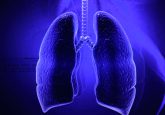A breathalyzer for real-time monitoring of lipolysis: how a chip could have a role in diabetes diagnoses

Scientists at ETH Zurich and the University Hospital Zurich (both Switzerland) have developed a method for the highly convenient, real-time monitoring of lipolysis by testing a person’s exhalations during exercise.
Researchers have developed a small gas sensor, which exclusively detects and measures the presence of acetone, a molecule present in the exhaled breath of undiagnosed Type I Diabetes patients. It is also a marker of lipolysis. As the most volatile of the lipid metabolites exhaled, acetone is detected exclusively by the chip preventing inference from more than 800 known volatile components.
Research published in Analytical Chemistry described the sensor as highly sensitive, capable of detecting a single acetone molecule in one hundred million molecules. The chip is coated in a special film of tungsten trioxide semiconducting nanoparticles, implanted with single atoms of silicon. The specific crystalline arrangement of the nanoparticles allows interaction reducing resistance of the chip coated with the nanoparticles, and this phenomenon can then be measured.
The team is now working to refine the technology to reduce the size of the chip, to be able to market and manufacture a compact and manageable product. Originally designed to aid the diagnosis of Type I Diabetes, a compact and highly sensitive product would also “allow athletes and people who want to lose weight to check for themselves when their bodies begin to burn fat so that they can optimize their training regimen,” commented Andreas Güntner (ETH Zurich).
The team is also working on developing gas sensors for other medically relevant molecules in exhalations, including ammonia to test kidney function, isoprene to test cholesterol metabolism and various aldehydes for the early detection of lung cancer.
You can find out more from this video from ETH Zurich, here.
Sources: Güntner AT, Sievi NA, Theodore SJ, Gulich T, Kohler M, Pratsinis SE. Noninvasive body fat burn monitoring from exhaled acetone with si-doped WO3-sensing nanoparticles. Anal. Chem. 89(19), 10578–10584 (2017); https://phys.org/news/2017-10-blood.html






